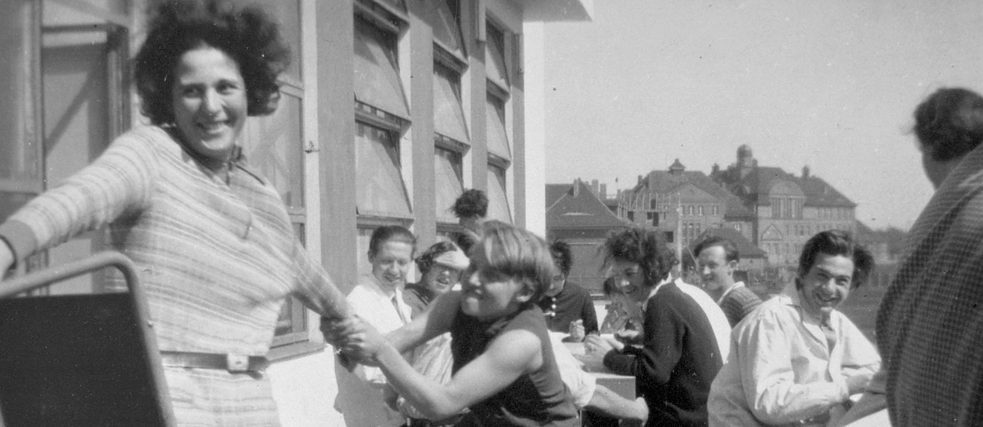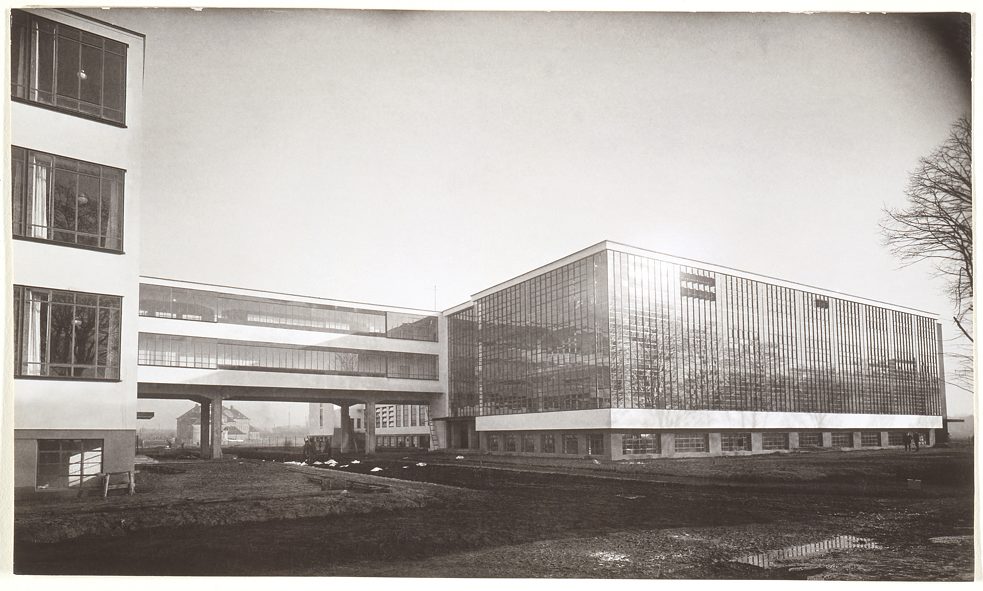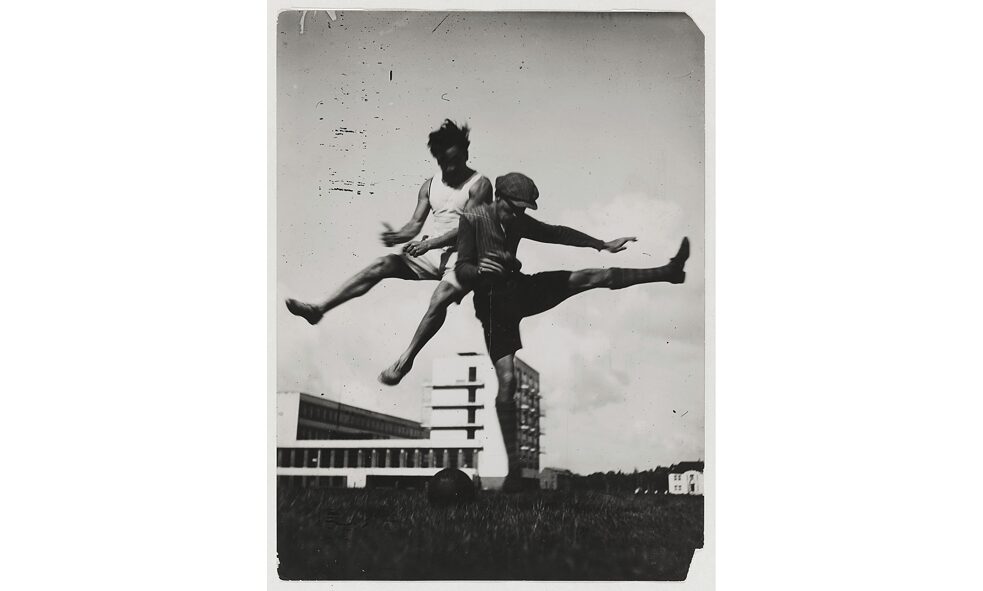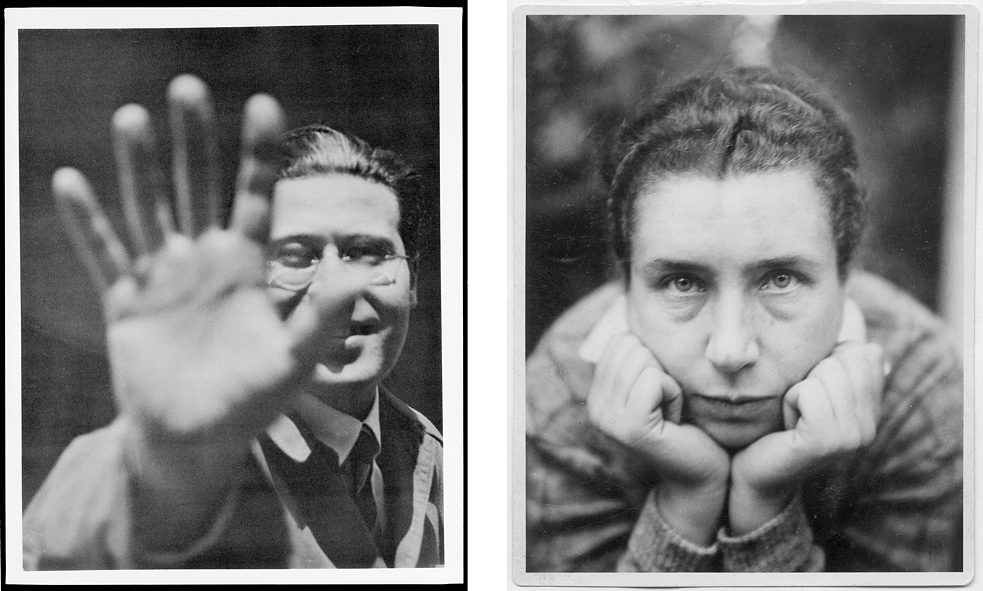The bauhaus.photo Traveling Exhibition
Learning New Ways of Seeing

To celebrate the Bauhaus centenary year, 100 photographs from Berlin’s Bauhaus-Archiv / Museum für Gestaltung were shown across the USA during 2019 in a traveling exhibition. It offered a sensory introduction to life at the Bauhaus, as well as to the architecture and products of the famous art school. Astrid Bähr and Sibylle Hoiman, both of whom worked on the exhibition, give an initial insight.
Ms. Bähr, Ms. Hoiman, could you perhaps explain to us why photography was so important to the Bauhaus?
Photography was a medium well-suited to presenting and communicating the Bauhaus itself, and to conveying the atmosphere at the Bauhaus and its fundamental ideas. It was used for documentation purposes, and to show the works produced there to a wider audience – for example in exhibitions, books, newspapers, and lectures. Photography was also used artistically, however, especially thanks to the influence of László Moholy-Nagy, for whom photography was a key creative medium in theory and practice. From 1929, it was also one of the subjects taught at the Bauhaus in a department run by Walter Peterhans.
What can we see in the exhibition?
The exhibition shows how photography was used at the Bauhaus. Bauhaus architecture and products play an important role, as do portraits of the people behind them. In “Life at the Bauhaus”, perhaps the most ‘private’ section, insights are given into the everyday lives of the people who worked and studied at the Bauhaus. Of course, some of the photographs are staged, such as T. Lux Feininger’s “Jump over the Bauhaus”.
And which is the most famous photograph in the exhibition?
Probably one by Lucia Moholy. She was commissioned by Bauhaus founder Walter Gropius to photograph the Bauhaus school building. The photos give a good impression of the principles underlying Gropius’ architecture and of the harmony between material, form and content. Her pictures were published and widely disseminated even before the Bauhaus building was opened; as such, they became so to speak the Bauhaus calling card.
What role was played by László and Lucia Moholy-Nagy in developing photography at the Bauhaus?
A decisive one! After arriving at the Bauhaus with her husband László, Lucia studied photography at the Atelier Eckner in Weimar. While she documented architecture and products for the Bauhaus, László Moholy-Nagy pursued artistic work and came up with some radically new solutions. He created a new theoretical basis for photography as a form of artistic expression. He provided some key impetus, long before the class in photography was established at the Bauhaus. Some of the student photographs in the “Life at the Bauhaus” section of the exhibition are wonderful examples of this.
What was so special about the ‘New Vision’ approach that was taught at the Bauhaus?
‘New Vision’ involved trying out new ways of seeing – for example by using unusual framings, by fragmenting objects, by using multiple exposures and dissolves, or even creating images without a camera simply by exposing photographic paper to light and producing a photogram. Thus the ‘New Vision’ approach allowed perceptual patterns to be explored and habitual ways of seeing put to the test.
Some of the pictures depict everyday student life at the Bauhaus. People not only studied here – they danced, did sport and drama, and loved. However, the period between the two wars in Germany was also a time of poverty and hunger. Can you paint a realistic picture of everyday life for us?
Most of the preserved photographs date back to the period in Dessau – when the worst years of famine during the Weimar Republic were already over. From 1925, some of the wealthier students owned small-format cameras that they also lent to their fellow (not so wealthy) students. It is striking that the positive aspects of the Bauhaus as a community predominate because photography was also a medium used to celebrate togetherness and to share and exchange ideas and views. That said, the picture of the Bauhaus painted by the photographs can only ever be subjective.
In 1933, the Nazis forced the Bauhaus school to its knees. Many of those at the Bauhaus had to flee. Some very prominent members, such as Walter Gropius and its last director Mies van der Rohe, found a new home for themselves in the USA. Who from the school of photography was able to establish a new career here?
Josef Albers and his wife Anni already emigrated to the USA in 1933. Albers continued at Black Mountain College to implement the teaching methods he had developed at the Bauhaus. He was followed in 1937 by Walter Gropius and László Moholy-Nagy. While Gropius taught architecture at Harvard, Moholy-Nagy founded the New Bauhaus in Chicago, later the School of Design, which produced a whole series of photographers and photography teachers. Among those Bauhaus members who emigrated to the USA, the photographers Walter Peterhans and Andreas Feininger deserve a particular mention.
Which Bauhaus ideas and insights are still relevant today?
The issues dealt with at the Bauhaus are more closely related to today’s debates about architecture, living and work than is often imagined. After all, today we also find ourselves in a society that is increasingly split into two camps and characterized by considerable social differences. The resulting problems demand long-term solutions for which the examples of affordable housing programs and urban development schemes in the Weimar Republic can serve as useful inspiration. It is fascinating to see the openness, transparency and tolerance with which similar discussions took place at the Bauhaus, and how high their communicative level was. We could learn a lot today from this approach to discussion and communication.
The Bauhaus-Archiv / Museum für Gestaltung boasts the world’s largest collection related to the history of the Bauhaus (1919-1933). In a building designed by Bauhaus founder Walter Gropius, the Berlin Bauhaus institution presents key works from its collection as a museum for design, while as an international research center it explores the history and impact of the Bauhaus. The Bauhaus-Archiv is currently being renovated in accordance with historic monument requirements, with a new museum building being added. Smaller exhibitions and events will be on show at the temporary bauhaus-archiv.


